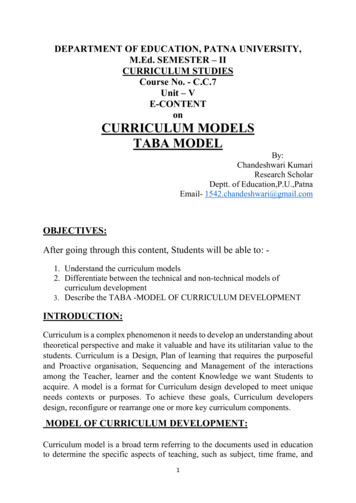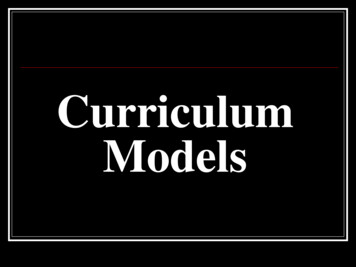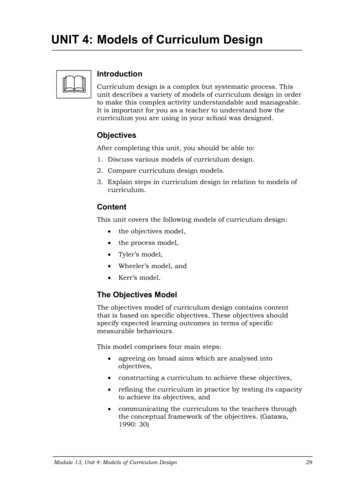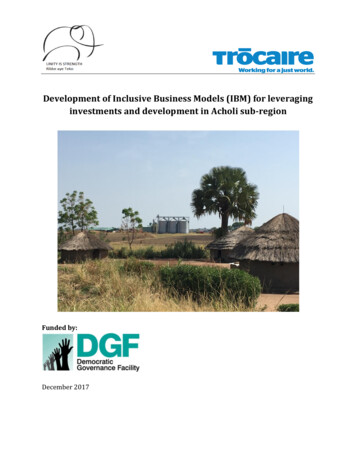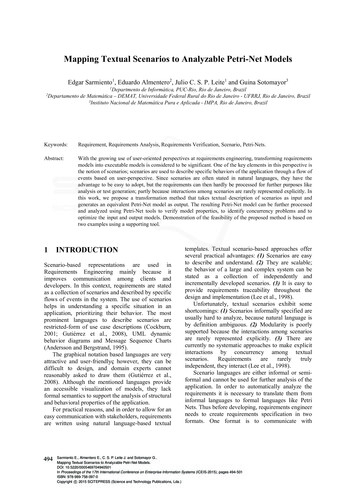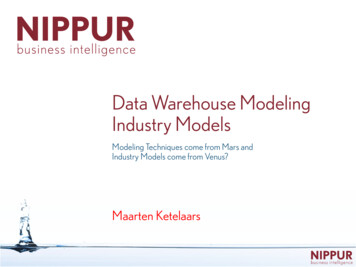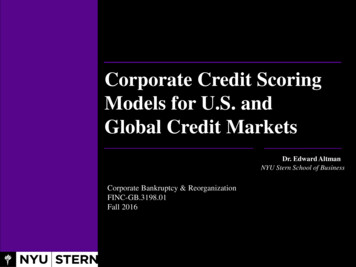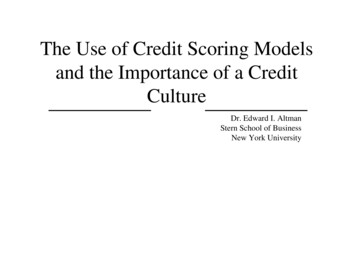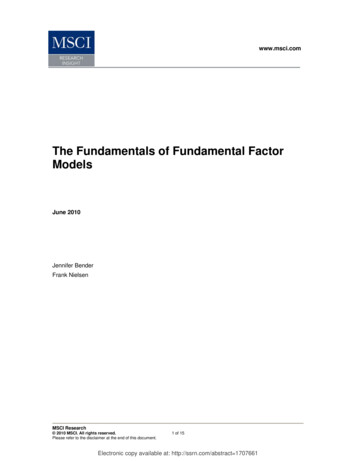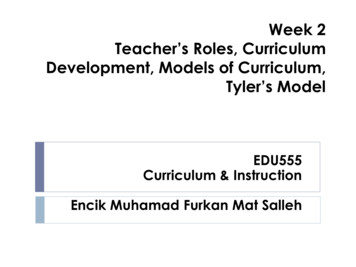
Transcription
Week 2Teacher’s Roles, CurriculumDevelopment, Models of Curriculum,Tyler’s ModelEDU555Curriculum & InstructionEncik Muhamad Furkan Mat Salleh
Teacher’s Roles in CurriculumDevelopment
How does the three entities relate to oneanother?CurriculumTeacherStudents
TEACHER’S ROLE IN CURRICULUM DEVELOPMENT Teachers need to have theknowledge of curriculumdevelopment Involved daily in curriculumdevelopment byimplementing the curriculumthrough the process ofteaching and learning. Prepare daily lesson plan intheir teaching and learning.
Curriculum(Plan of Study)Main Role:T&L-Knowledge isa MUSTImplementationof curriculumthrough T&L(How?)Syllabus(Course ofSubject)Scheme ofWork (WeeklyPlan)Lesson Plan(Daily Plan)
Curriculum DevelopmentPLANNING(What to teach?)Identifying philosophy,vision and missionSetting goalsand objectivesDesigning the curriculumCURRICULUM3 MAIN stagesIMPLEMENTATION(How to teach it?)EVALUATION(How to evaluateit?)Implementing theCurriculum (T&L)Managing resourcesEvaluating the curriculumRevising the curriculum
Models of Curriculum
Models of Curriculum ConstructionThere are many models in curriculum construction.In this course, 4 models of curriculum construction willbe discussed.The Tyler’s /ObjectivesModelTheInteraction /DynamicModelTaba’s ModelContemporaryModel
Tyler’s / Objectives Model Proposed by Ralph Tyler (1950)Basic Principles of Curriculum and Instruction (1949/50) Based on the "Eight-Year Study" (1933–1941),a national program, involving 30 secondaryschools and 300 colleges and universities, thataddressed narrowness and rigidity in highschool curricula.The most common model - shapingcurriculum and instructional design to this day
About Ralph Tyler American educator - He has been calledby some as "the father of educationalevaluation and assessment".Bachelor's degree (1921) - Doane Collegein Crete, Nebraska.A high school science teacher (1923) Pierre, South DakotaMaster's degree (1923) - University ofNebraskaPh.D. (1927) - University of Chicago in 1927Served few universities- University of North Carolina (1927)- Ohio State University (1927)- University of Chicago (1938)- Stanford University (1953)
Fundamental Questions(delivering and evaluating instruction) What educational purposes should the school seek toattain? (Defining appropriate learning objectives.) How can learning experiences be selected which arelikely to be useful in attaining these objectives?(Introducing useful learning experiences.) How can learning experiences be organized for effectiveinstruction? (Organizing experiences to maximize theireffect.) How can the effectiveness of learning experiences beevaluated? (Evaluating the process and revising theareas that were not effective.)
Tyler’s / Objectives ModelOBJECTIVESCONTENTMETHODEVALUATIONStating the aims and objectives of the programbased on the respective philosophy of educationSelecting the contents or subject matter to helpstudents achieve the objectivesDeciding on the method to organize and presentthe contentsDetermining the method to measure the extentobjectives are achieved
Objectives“ The progressive emphasizes the importance ofstudying the child to find out what kinds of interestshe has, what problems he encounters, whatpurposes he has in mind. The progressive sees thisinformation as providing the basic source forselecting objectives”(Denham, 2002)Should be based on an analysis of: the student as a learner the contemporary life outside the school (society) opinion of specialists in the various subjects
ObjectivesThe objectives identified need to be screenedand reduced to a small number of: consistent, highly important objectivesbe in line with the educational philosophy,goals, aims and objectivespsychology of the learner and learning
ObjectivesShould be specified precisely to indicate what issupposed to be learned, to enable accurateassessment specify the changes to be brought about inthe students, to show evidence ofattainment of objectives
Contents“Tyler believes that students learn through exploration. Likehis mentor, John Dewey, Tyler believes teachers shouldencourage children to become actively engaged indiscovering what the world is like” (Denham, 2002)Determine the contents or subject matter andlearning experiences that might lead to theattainment of the stated objectives
ContentsSelection of Subject Matter It should be:- relevant, adequate- balanced in term of breadth and depth(i) scope: amount, depth of coverage,concentration(ii) sequence: hierarchy & progression ofcomplexity or difficulty
Method“Central to Tyler’s Model is effectively organizing thelearning activities. Students need concrete experiencesto which the readings are meaningfully connected. Threemajor criteria are required in building organized learningexperiences: continuity, sequence and integration”(Denham, 2002)Once the contents are selected, it should beorganized based on the following principle: Principle of Continuity, Sequence andIntegration
MethodPrinciples of Continuity Important objectives need to be continuouslyrepeated (many times) and in different waysso that they are learned thoroughlyPrinciples of Sequence Learning experience should build on oneanother, according to proper sequence ororder Taking students more deeply into the subjecteach timePrinciples of Integration Learning experiences need to be to becoherent and related to one another
Method Decide on the method of implementing thecurriculum through the process of T&L- Lecture, discussion, experiment,demonstration, role-play, forum, debate, fieldtrip/fieldwork, presentation, technology, classproject, story telling etc
Evaluation Determine the method to measure whetherthe curriculum is achieving the desiredobjectives or results Using a variety of methods e.g. tests, worksamples, questionnaires, records, etc. It involves an appraisal of the students’ actualbehaviour
Evaluation It should be carried out at several different times tosecure evidence of the permanence of thelearning achieved Results should be used to: indicate strengths and weaknesses of the programto plan for revision
Strengths or advantages of the Tyler’s Model1.Logical as it begins with stating theobjectives2.Objectives are clearly defined in thepurposes.3.Organized as it follows step by stepprocess4.Practical as it portrays the actual processof curriculum development
Criticisms of The Tyler Model Governed by objectivea) Narrowly interpreted objectives(acceptable verbs)b) Difficult and time consumingconstruction of behavioral objectives It’s a linear – step by step process whichcan be tedious
Criticisms of The Tyler Model Too rigida) Curriculum restricted to a constrictedrange of student skills and knowledgeb) Critical thinking, problem solving andvalue acquiring processes cannot beplainly declared in behavioral objectivesc) the process need to follow the four steps in order
Criticisms of The Tyler Model Learning experiences are individual and arenot totally within the power of the teacher toselect The teacher can control the learning experiencethrough the manipulation of the environment, whichresults in stimulating situations sufficient to evoke thekind of learning outcomes desired
THANK YOU
Strengths or advantages of the Tyler’s Model 1. Logical as it begins with stating the objectives 2. Objectives are clearly defined in the purposes. 3. Organized as it follows step by step process 4. Practical as it portrays the actual process of curriculum development
